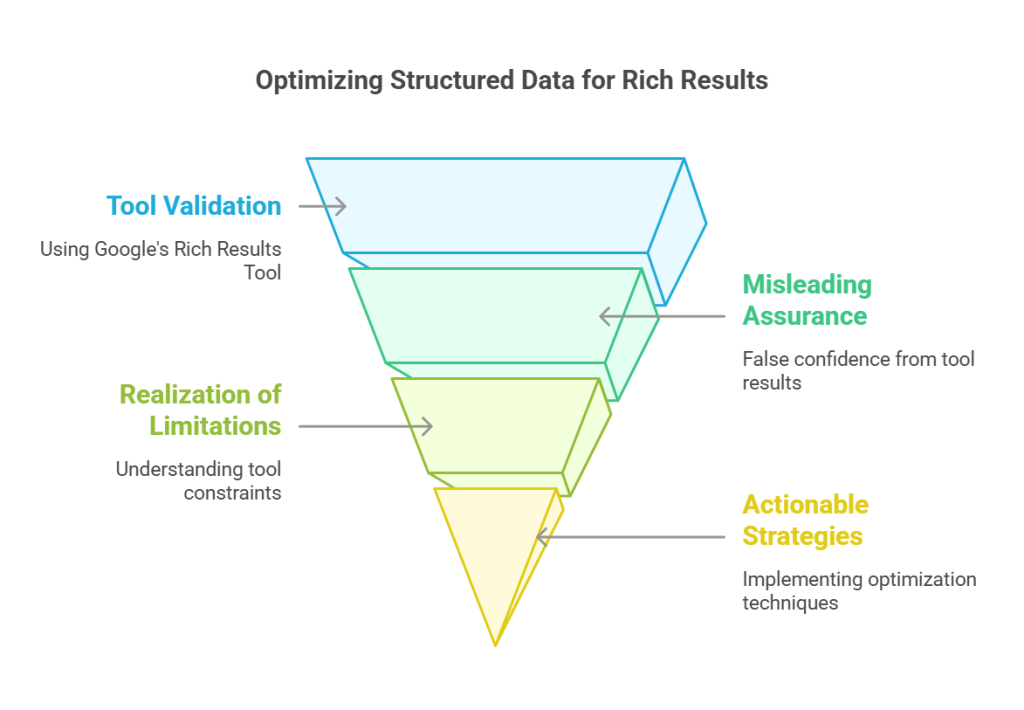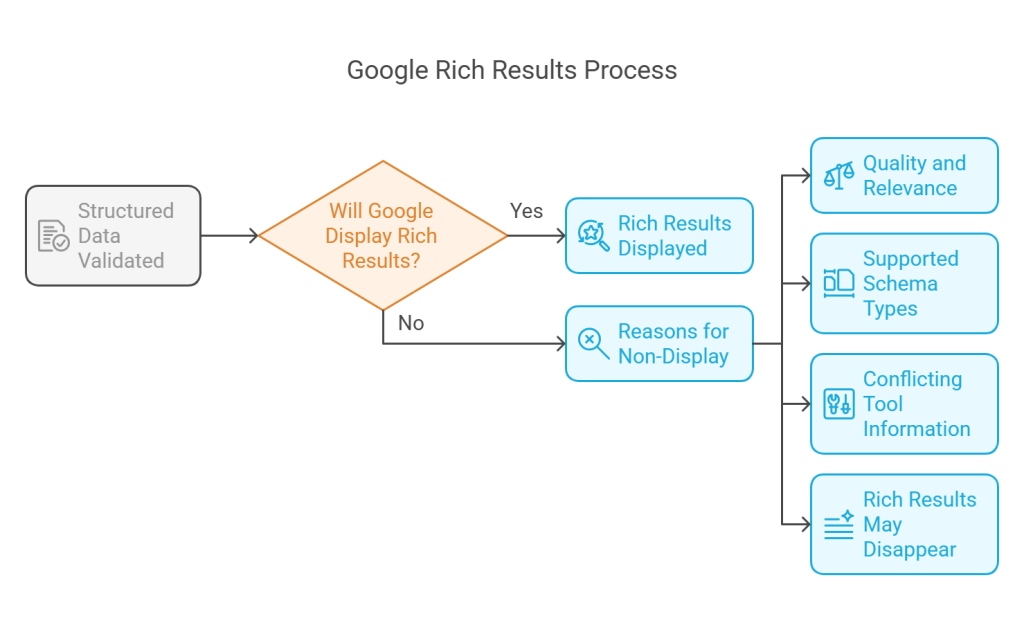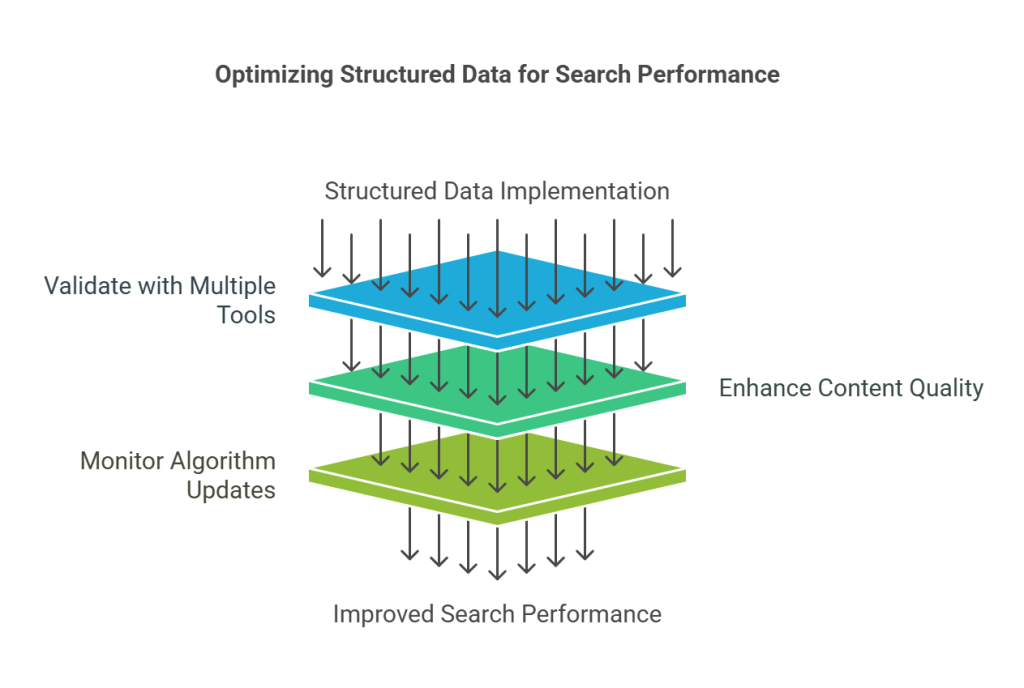If you are an SEO professional, website owner, or developer, you have probably used Google’s Rich Results Tool at some point. This tool is designed to help users validate structured data on their web pages and check whether they are eligible for rich results. These enhanced search snippets include things like star ratings, images, event details, FAQs, and product prices, making search listings more engaging and increasing click-through rates.
However, many website owners and SEO experts fall into a common trap. They assume that if their page passes Google’s structured data test, it will automatically generate rich snippets in search results. Then, when those rich results do not appear, they are left confused and frustrated.
So what is happening here? Why does Google’s Rich Results Tool sometimes give misleading information? More importantly, how can you ensure that your structured data is actually working as intended? This article will explore the limitations of the Rich Results Tool and provide actionable strategies to verify and optimize structured data correctly.

What is Google’s Rich Results Tool?
Google’s Rich Results Tool is a structured data testing tool that allows website owners to check if their pages are eligible for rich results. It analyzes the structured data on a page and provides feedback on whether the markup is correctly formatted and supported by Google.
Here are the primary functions of the tool:
- It verifies that structured data follows Google’s technical requirements.
- It checks whether a page is eligible for rich results based on its structured data.
- It highlights errors or warnings in the structured data implementation.
- It provides a preview of how the rich result might appear in Google Search.
At first glance, this tool seems like an essential resource for anyone looking to enhance their search visibility. However, while it is useful for basic validation, it has several significant limitations that can mislead users.
Need SEO Services in Toronto? Call us
Why Google’s Rich Results Tool May Be Misleading?
Many people assume that if their structured data is validated through Google’s Rich Results Tool, their rich results will automatically appear in search. Unfortunately, that is not the case. Here are some reasons why this tool can provide misleading information.
Validation Does Not Guarantee Rich Results
One of the biggest misconceptions is that passing Google’s Rich Results Tool means a page will definitely display rich snippets. The reality is that the tool only verifies whether the structured data is correctly formatted, not whether Google will actually use it in search results.
Google’s decision to display rich results is influenced by various factors beyond structured data validation. These include the quality and relevance of the page’s content, the trustworthiness of the website, and the search intent of users. Even if the structured data is perfect, Google may still choose not to display rich snippets for competitive or algorithmic reasons.
Google Does Not Support All Schema Types for Rich Results
Another common issue is that Google only supports a limited number of structured data types for rich results. Even if structured data is valid according to Schema.org standards, it does not necessarily mean that Google will recognize it for rich results.
For example, schema types such as recipes, products, reviews, FAQs, and events are commonly supported by Google for rich results. However, other schema types like job postings, articles, and organizations may be valid but will not generate rich snippets because Google does not currently support them for enhanced search display.
This means that website owners might pass the Rich Results Tool test but still not see any actual rich results in search because the schema they used is not eligible for enhanced search features.
Conflicting Information Between Google’s Tools
Another frustrating issue is that different Google tools often provide contradictory results. For instance, a page may pass the Rich Results Tool test with no errors, but Google Search Console may indicate that rich results are not appearing. Additionally, a page might be validated for rich results but still not display them in live search results.
This inconsistency makes it difficult for website owners to determine whether their structured data is truly working. Instead of relying solely on the Rich Results Tool, it is essential to monitor real-world search results and cross-check structured data implementation using other tools.
Rich Results Can Disappear Without Warning
Even if a page has structured data that was previously generating rich results, those results can disappear overnight. This can happen due to Google algorithm updates, changes in structured data guidelines, or shifts in ranking factors.
Google frequently updates its search algorithms and structured data policies, meaning that a website’s rich results might not always remain consistent. A page that once displayed enhanced search snippets may suddenly lose them due to a ranking adjustment or a change in how Google prioritizes rich results.
This further proves that relying on the Rich Results Tool alone is not enough. Website owners need to continuously monitor their structured data performance and keep up with industry best practices to maintain visibility in search.

✔️ Also Read: Keyword Research Tools for Local Businesses 2025 : Free and Paid
How to Properly Validate and Optimize Structured Data
Since Google’s Rich Results Tool is not always reliable, website owners should follow a more comprehensive approach to validating structured data. Here are some key strategies to ensure that structured data is correctly implemented and optimized for search performance.
Use Multiple Structured Data Validation Tools
Instead of relying only on Google’s Rich Results Tool, website owners should use multiple validation tools to cross-check structured data implementation.
Some recommended tools include:
- Schema Markup Validator by Schema.org, which provides a general check for structured data validity.
- Google Search Console’s Structured Data Report, which tracks how Google processes and interprets structured data over time.
- Live search results, which provide real-world confirmation of whether rich results are appearing.
Using multiple tools ensures a broader and more accurate analysis of structured data effectiveness.
Focus on Content Quality and Relevance
Structured data alone does not guarantee rich results. Google considers content quality, user experience, and page relevance when determining whether to display enhanced snippets.
To improve the chances of earning rich results, website owners should:
- Create high-quality, well-structured content that provides real value to users.
- Ensure that pages with structured data are informative, engaging, and aligned with search intent.
- Optimize on-page SEO factors such as title tags, meta descriptions, and internal linking.
High-quality content combined with structured data increases the likelihood that Google will reward a page with rich results.
Monitor Google Algorithm Updates and Industry Changes
Google frequently updates its structured data policies and ranking algorithms. Website owners should stay informed about these changes by following Google Search Central updates and participating in SEO forums and industry discussions.
Regularly reviewing structured data performance in Google Search Console can also help identify issues early and adjust implementation strategies accordingly.

Final Thoughts
Google’s Rich Results Tool is a helpful resource for testing structured data, but it should not be the sole measure of success. A valid structured data test result does not guarantee that rich results will appear in Google search. The tool only checks eligibility, while Google’s algorithms decide whether to display rich snippets based on multiple factors such as content quality, website authority, and search intent.
Additionally, Google only supports certain schema types for rich results, meaning that even if structured data is technically correct, it may not generate enhanced search snippets. Furthermore, Google’s search algorithms frequently change, making rich results inconsistent and sometimes unpredictable.
To properly validate structured data, website owners should use multiple testing tools, monitor real-world search results, and focus on creating high-quality content that meets Google’s user experience standards. By taking a comprehensive approach to structured data optimization, website owners can maximize their chances of earning rich results and improving search visibility.






